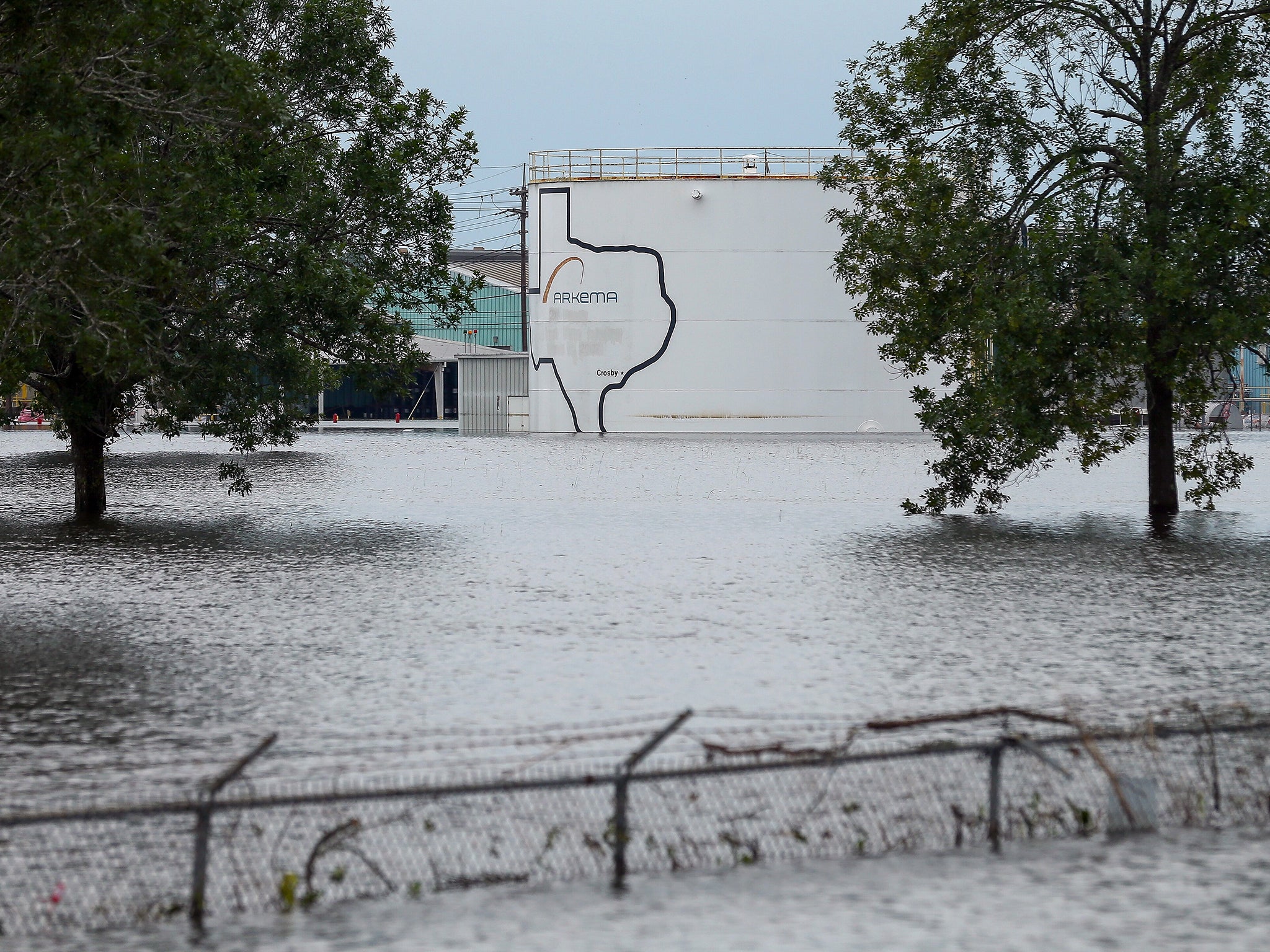Texas chemical fire explosion: Two blasts and black smoke rise from Arkema plant
'Unprecedented' 6ft of floodwater batters facility causing refrigeration units to fail

Your support helps us to tell the story
From reproductive rights to climate change to Big Tech, The Independent is on the ground when the story is developing. Whether it's investigating the financials of Elon Musk's pro-Trump PAC or producing our latest documentary, 'The A Word', which shines a light on the American women fighting for reproductive rights, we know how important it is to parse out the facts from the messaging.
At such a critical moment in US history, we need reporters on the ground. Your donation allows us to keep sending journalists to speak to both sides of the story.
The Independent is trusted by Americans across the entire political spectrum. And unlike many other quality news outlets, we choose not to lock Americans out of our reporting and analysis with paywalls. We believe quality journalism should be available to everyone, paid for by those who can afford it.
Your support makes all the difference.A flood-stricken chemical plant in Texas has exploded, sending flames and plumes of black smoke into the sky after its power systems were overwhelmed by Hurricane Harvey.
Smoke and a double explosion were reported in the early hours of Thursday at the Arkema SA chemical plant in Crosby, some 25 miles from Houston.
The company had evacuated remaining workers at the damaged plant on Tuesday, and Harris County ordered the evacuation of residents within a 1.5-mile (2.4-km) radius of the plant, which makes organic peroxides used in the production of plastic resins, polystyrene, paints and other products.
Flames shot up to 12m high, according to local officials.
Police officers who were taken to hospital following the double blast at about 2am local time have been released, after being treated for eye irritation.
"We want local residents to be aware that the product is stored in multiple locations on the site, and a threat of additional explosion remains," Arkema said in a statement.
"Please do not return to the area within the evacuation zone until local emergency response authorities announce it is safe to do so," the French company added.
The facility holds large amounts of sulphur dioxide, a toxic chemical, and methylpropene, a flammable gas. It had been battered by floodwaters from Hurricane Harvey, with levels reaching 6ft within its perimeter.
Harris County Sheriff Ed Gonzalez said no toxins were released and that there was no danger to the community. But at a news conference in Washington, DC, Brock Long, of the Federal Emergency Management Agency, said he considered plumes from the explosion "incredibly dangerous".
Arkema had warned of a potential explosion in an update on its website on Wednesday afternoon.
Rich Rowe, its North America chief executive, said: "Our Crosby facility makes organic peroxides, a family of compounds that are used in everything from making pharmaceuticals to construction materials.
"But organic peroxides may burn if not stored and handled under the right conditions. At Crosby, we prepared for what we recognised could be a worst case scenario. We had redundant contingency plans in place.
"Right now, we have an unprecedented 6ft of water at the plant. We have lost primary power and two sources of emergency backup power.
"As a result, we have lost critical refrigeration of the materials on site that could now explode and cause a subsequent intense fire. The high water and lack of power leave us with no way to prevent it."
Arkema submitted a plan to the federal government in 2014 outlining a worst-case scenario that said potentially 1.1 million residents could be affected by such an event over a distance of 23 miles, according to information compiled by a nonprofit group.
The company said it had been using "multiple layers of preventative and mitigation measures" at the plant, including steps to reduce the amount of substances released.
That made the worst case—in which all controls failed and strong winds blew toxic chemicals towards Houston, 25 miles away—"very unlikely", it said.
The Houston branch of the National Weather Service said a light breeze was blowing in the opposite direction at about 4.30am local time.
The plant falls along a stretch near Houston that features one of the largest concentrations of refineries, pipelines and chemical plants in the country.
More than three dozen people have been killed since Harvey made landfall as a hurricane on Friday. Tens of thousands have been displaced.
Moody's Analytics estimated the economic cost for south-east Texas at up to $75 billion, ranking Harvey among the costliest storms in US history.
On Thursday people living near the border between Texas and Louisiana faced the threat of major flooding, as floodwaters began receding in the Houston area following five days of torrential rain.
The storm had made landfall a second time on Wednesday, moving towards Louisiana. It was predicted to move northward after that.
Beaumont and Port Arthur, Texas, struggled with rising water as the area was pounded with what remained of the weakening storm, while Houston's fire department said it would begin a block-by-block search on Thursday of thousands of flooded homes.
Assistant fire chief Richard Mann said the searches were to ensure "no people were left behind."
Additional reporting by agencies
Subscribe to Independent Premium to bookmark this article
Want to bookmark your favourite articles and stories to read or reference later? Start your Independent Premium subscription today.
Join our commenting forum
Join thought-provoking conversations, follow other Independent readers and see their replies
Comments